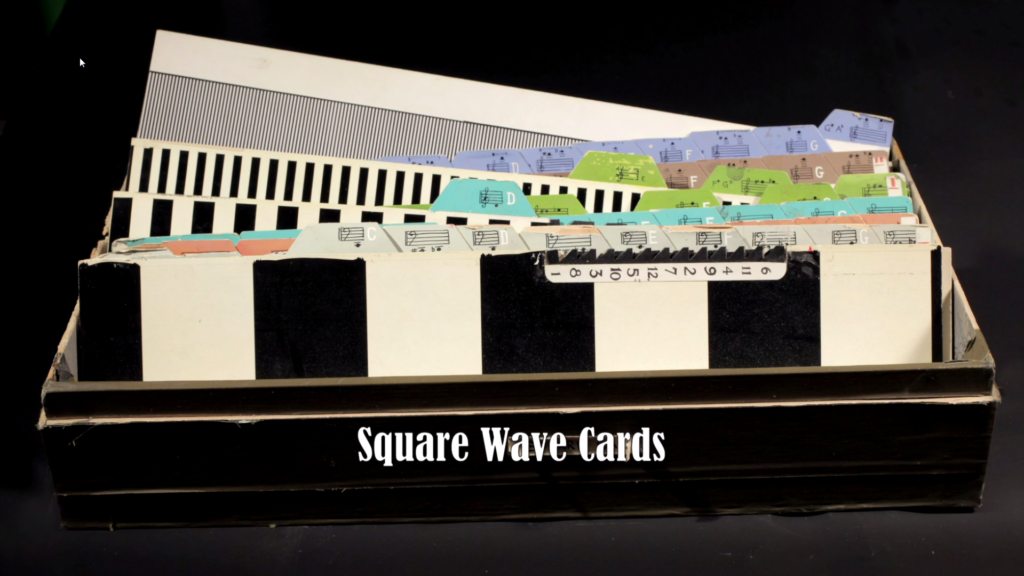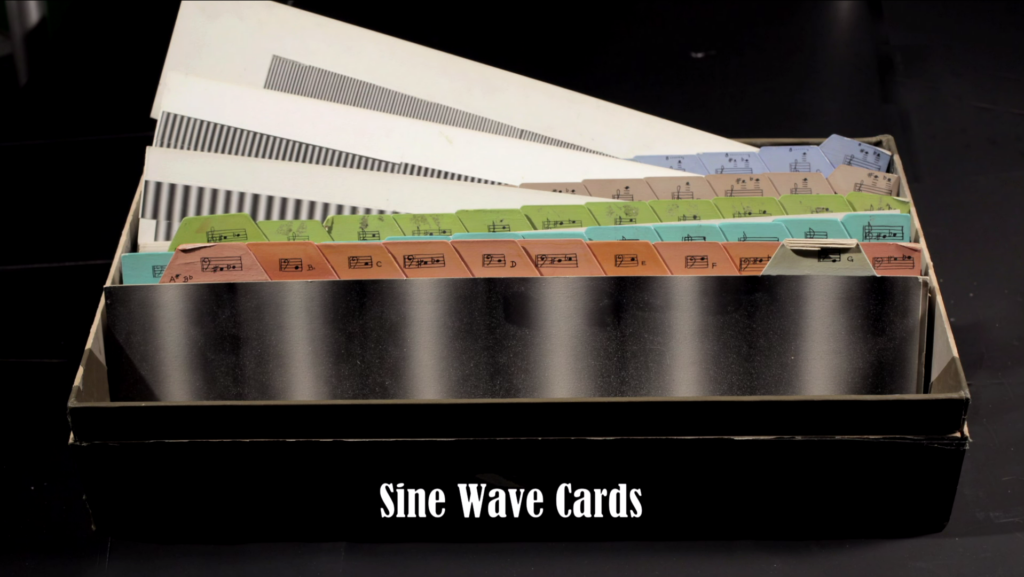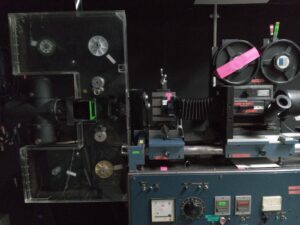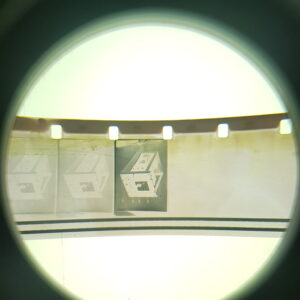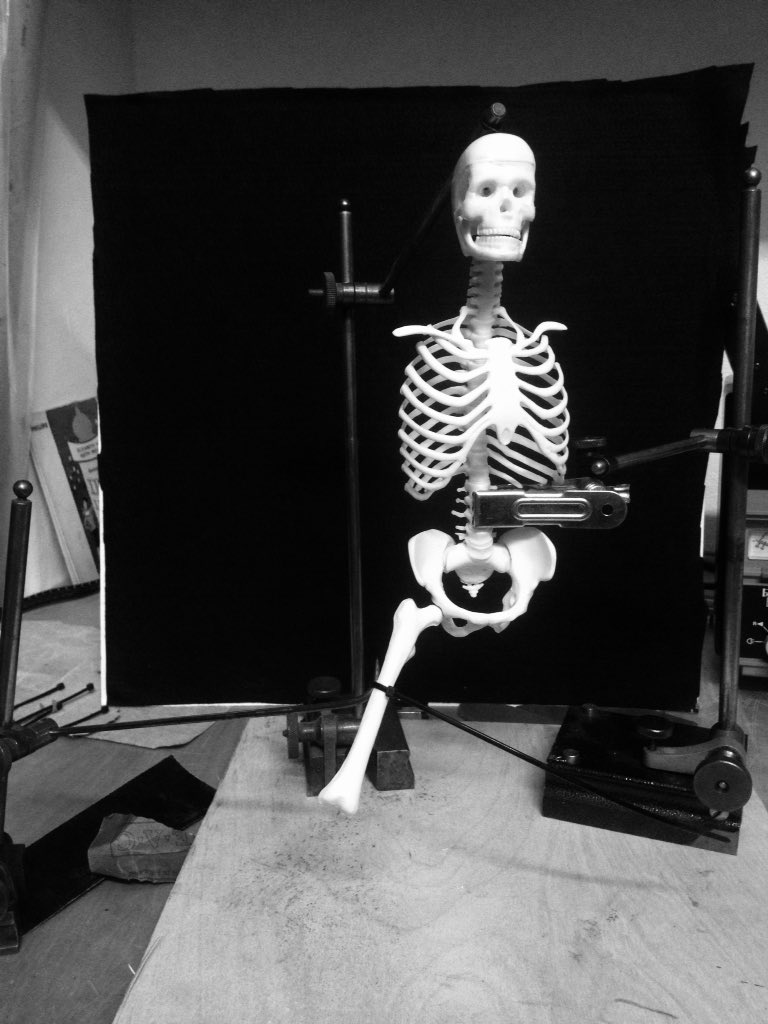Here is a brief plan guide to the graphic optical camera I am building.
In simplest terms it is a rostrum camera pointing down at an area for flat art work.
If the correct camera gate, in this case a full 35mm gate, is placed in the camera then the area below to be photographed INCLUDES the area occupied by the optical sound track.
Heres is a frame grab from a film about Norman McLarens optical sound track work and shows the camera he used which does exactly the same thing as above. The film is ‘Norman McLaren – Animated Musician’ by Donald McWilliams and many of the following framegrabs are from this film. This is an excellent film which looks closely at the work McLaren did in the area of graphic sound. I haven’t got permission to re-publish them here. I have tried by contacting the NFBC but have not heard back. I am happy to take them down if asked.
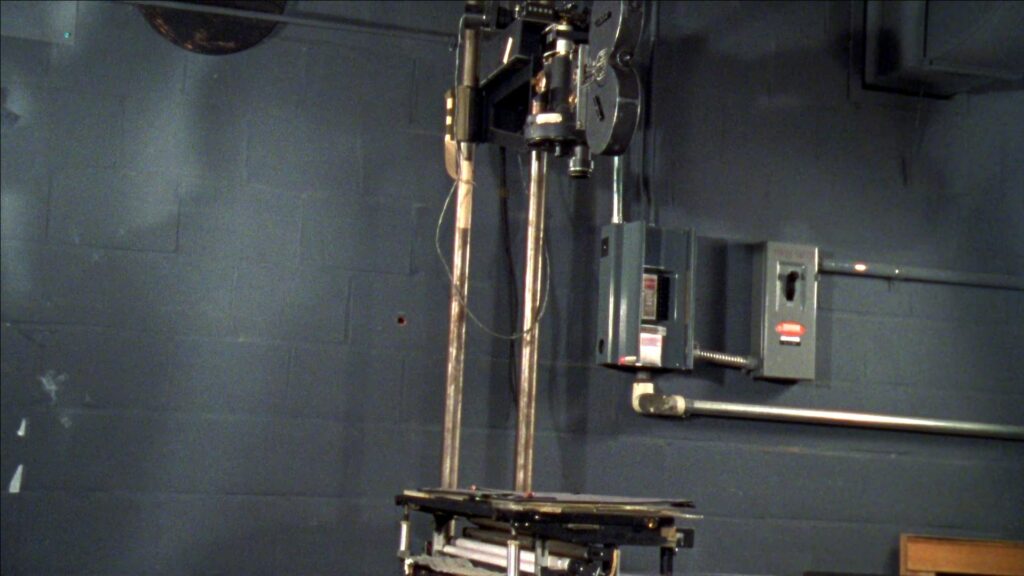
Depending on the lens and the distance from the artwork the area which contains only the sound apeture can be made to a specific size. Below is a shot of the apeture where you can see its dimensions. 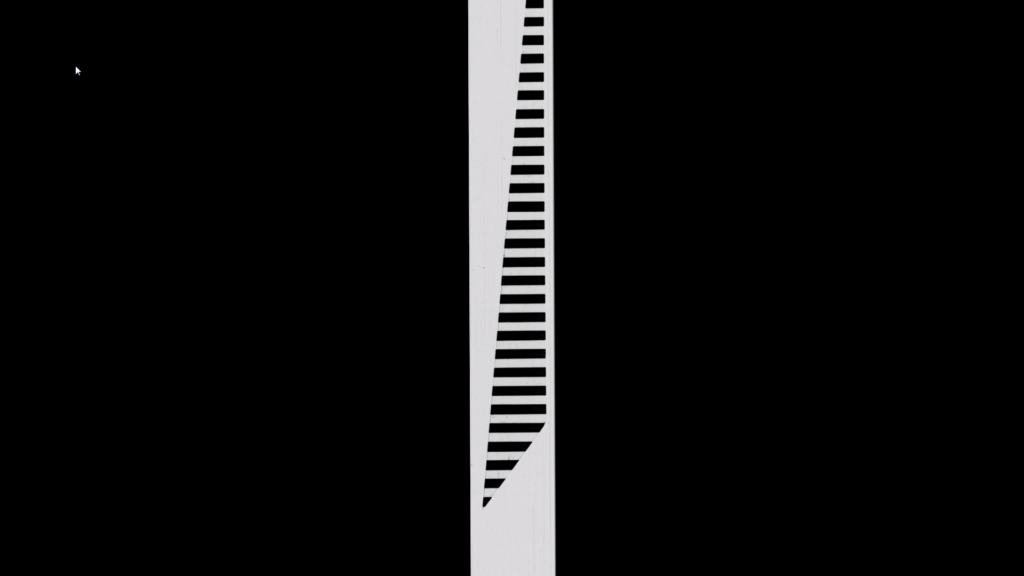
Below are two photos of a situation where a piece of film has been placed in the gate and projected. This helps us trace out the exact area where we will position the sound aperture to be photographed. The sound window is the blue/cyan strip on the left from a 35mm frame. The other one shows a 16mm rotoscoped frame with sound area on right. When the rostrum is set up this will be on the right and from the camera we will get a view like the next photo below.
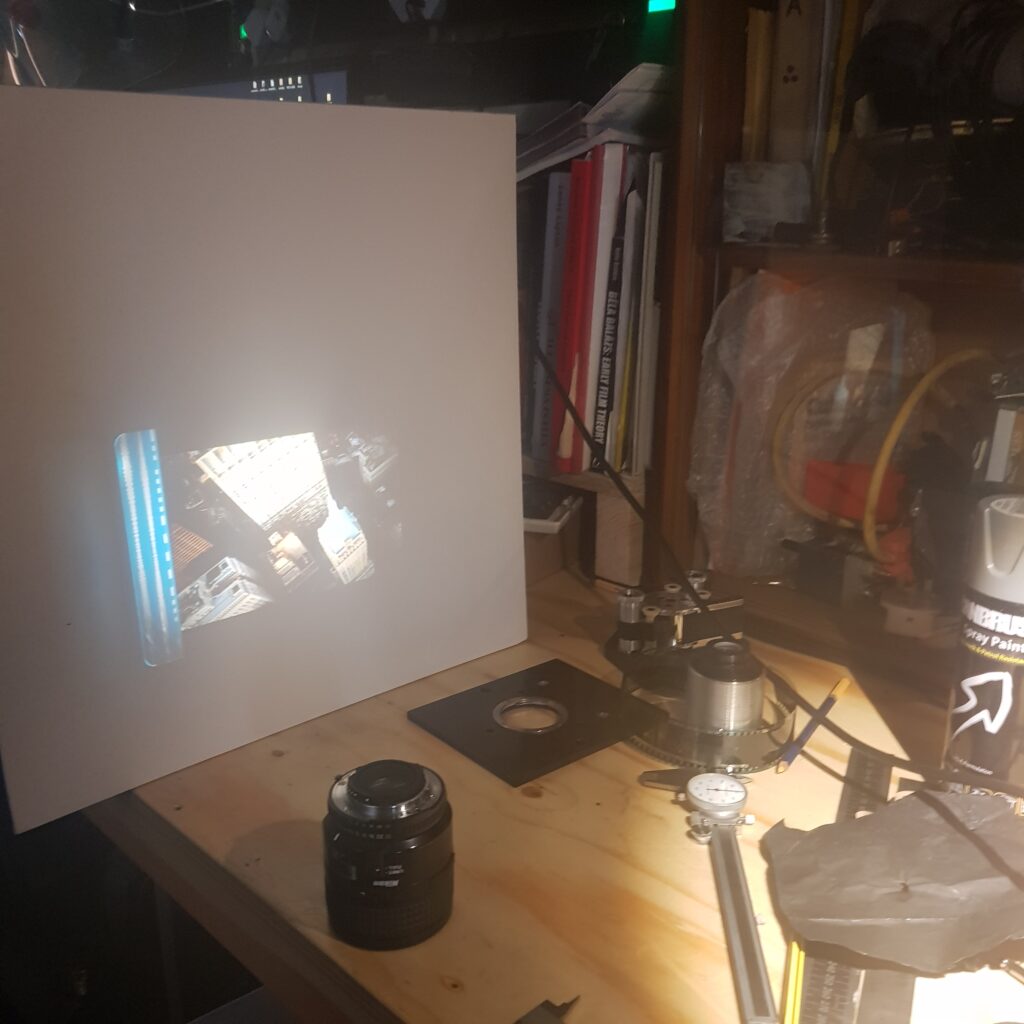
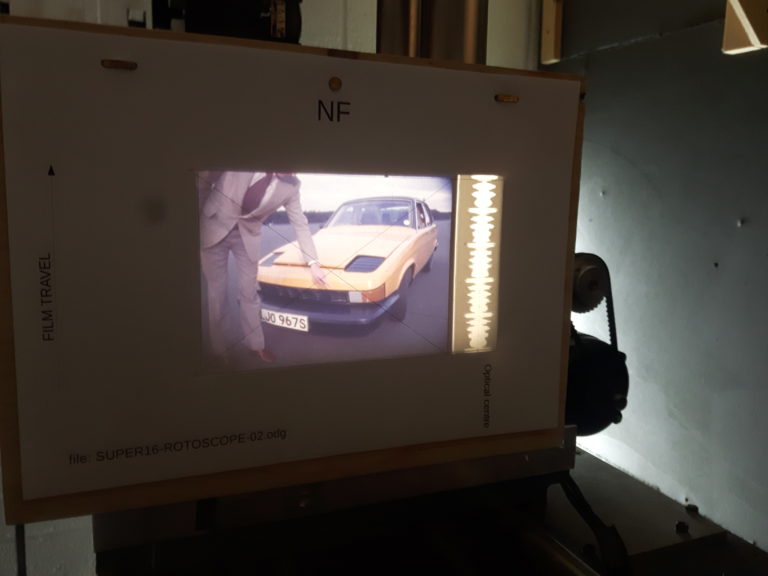
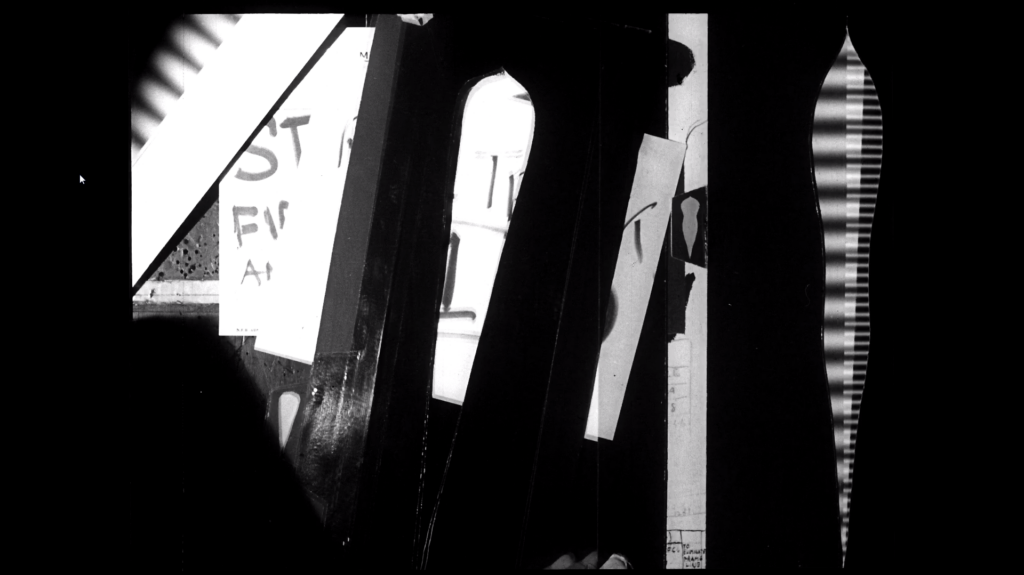
So here, only the shape on the right hand margin will produce sound even though we will seewhat is visible on the table.
The Aspect Ratio of the sound apeture is approx 1:6.43. So its say 1 inch wide by 6.43 inches high. To maximise being able to work with A4 paper and thus printed material Im planning on making the height around 290mm. This yields a rough sound aperture dimension of 45mm x 290mm.
This is such a simple and flexible method of generating experimental graphic sound. As the camera is under full exposure and frame control we can double or treble expose to produce chords, notate sequences, alter brightness and even change the size and racking of the image so images overlap the normally strict 4 perf blocking.
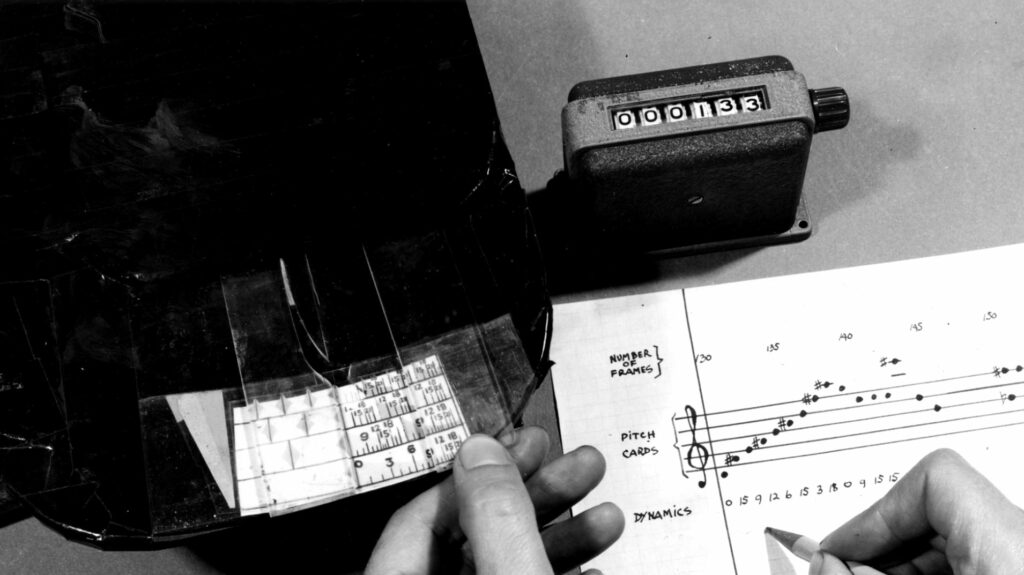
After exposing (probably onto Kodak 35mm double-x) and developed here with D96, its possible to then print 35mm to 35mm onto 2302, b/w 35mm print stock. Films can then be viewed or projected.
I am setting this up out of interest in it myself but would like to make it available to Artists who have a specific enthusiasm for the method and all its possibilities.
Heres an A4 sheet with 3 apetures set up with hatching at 10mm, 20mm and 30mm. The idea is to print these kinds of strips out and locate them on the flat artwork easel, then shoot a frame or more of film and then use a new one or the same one, whatever, and on, and on.

McLaren also uses window shapes with different envelopes that he places over grids of varying density to produce various types of envelope in optical sound.
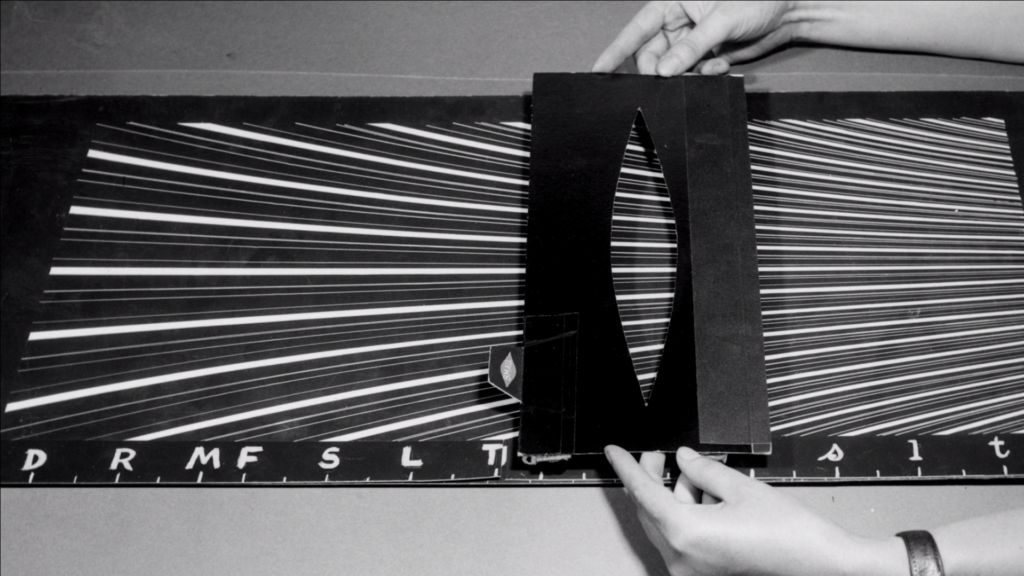
Here is a resource that Kodak produced that shows the tone produced by different line widths.
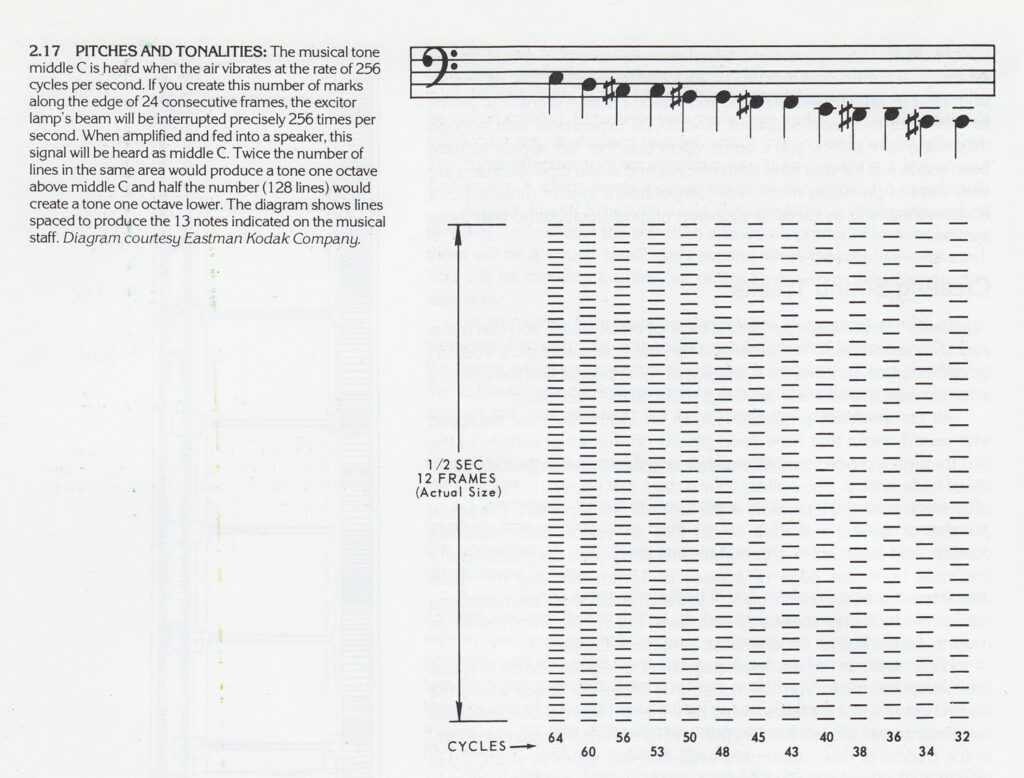
McLaren had an whole system of using cards with different line widths and types all organised into a pitch notation pallete that meant he could compose very quickly and make work in this way reasonably fast. Its worth mentioning that ANY image or graphic form inside this apeture will produce SOMEKIND of audio signal.
